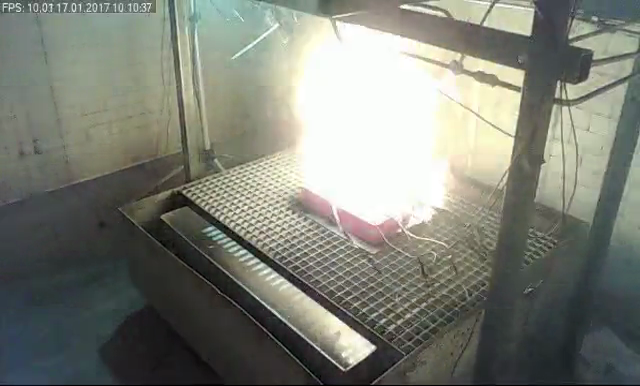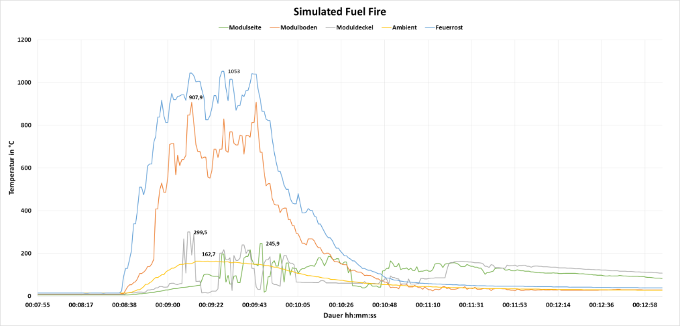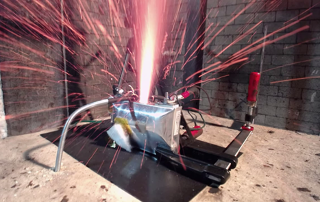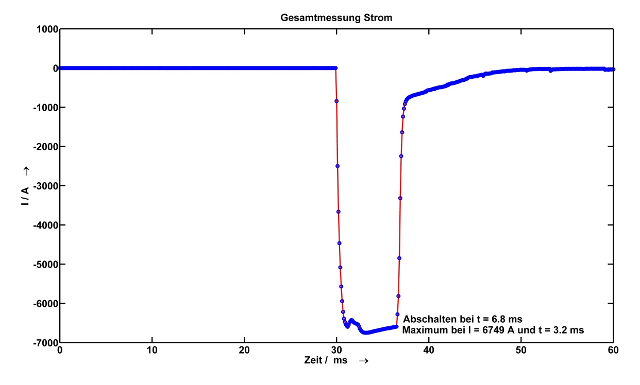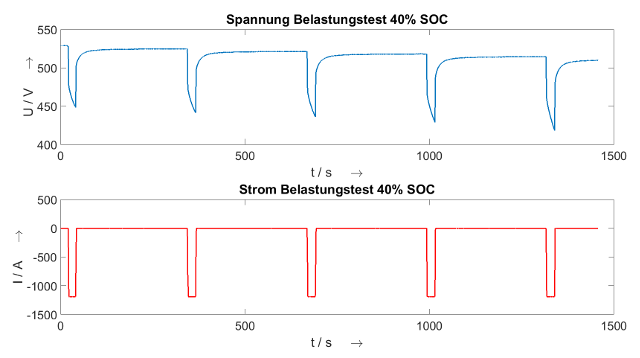Clausthal University of Technology operates a battery and sensor test center (https://www.batteriesicherheit.eu/batterie-und-sensoriktestzentrum) at the Battery Safety Campus Germany together with the Research Center for Energy Storage Technologies and the Fraunhofer Heinrich Hertz Institute. This embodies a research infrastructure for testing high-performance battery systems that is unique in Germany in terms of its performance. With this infrastructure, the partners are prepared for future challenges when batteries for buses and trucks are no longer unusual and charging these batteries at 500 kW is no longer a rarity.
Battery tests in border areas
The experiments in the limit ranges for Li-ion batteries involve short-circuit and overcharging tests, for example. Disproportionately high currents and increased heating occur during short-circuit tests. Safety mechanisms or the thermal propagation within a module or even entire battery systems are of particular interest here. Overcharged batteries exhibit a significantly more reactive behavior and are therefore considered an unmistakably high source of danger. In the event of an unwanted fire in a Li-ion battery, the spread of fire is particularly crucial and should be kept under control and analyzed.
Lithium-ion batteries are one of the most important electrochemical storage technologies in the commercial sector today. They are used in a wide variety of portable devices, for electric cars, home storage systems and many other applications around the clock. They are particularly important because of their high energy density. In everyday use, however, the question arises as to what happens in the event of a battery fire and what requirements a possible extinguishing agent must meet. Manufacturers of extinguishing agents are concerned with this question, as battery fires cannot be compared with conventional house fires. The requirements are varied and require a high level of research and development expertise.
Together with the company FNL Neuruppin and researchers at Clausthal University of Technology, experimental proof of the extinguishing effect of various extinguishing agents on fires involving lithium-ion batteries is being provided. At the Battery Safety Campus Germany, new concepts for the prevention of battery fires can be developed and the effectiveness of extinguishing agents for different storage technologies can be researched.
The available infrastructure makes it possible to test batteries not only up to the load limit, but also beyond, using existing firing ovens. In addition to the simulation of critical situations, it is therefore also possible to carry out targeted safety tests in accordance with the standard. Figure 3 illustrates the temperature curve of a battery during a fuel fire test in accordance with ECE R100. This simulates how a lithium-ion vehicle battery behaves in the event of a fuel fire, e.g. after an accident.
As part of testing the safety of batteries and battery systems, tests are carried out at the battery test center in accordance with various standards. Examples include various tests from the ECE R100, ECE R136 and UN T 38.3 regulations as well as various ICE standards. These regulations define the thermal, electrical and mechanical requirements for the respective battery systems and specify test procedures for these. All required thermal and electrical test sequences can be carried out in the battery test center. The following figure shows the current flow for a short-circuit test in accordance with ECE R100. The high-voltage battery storage system has a nominal voltage of 552 volts and an energy content of 88 kWh.
Performance tests can be carried out up to a maximum output of 1.2 MW. This means that requirements resulting from a specific application can be checked at system level. Furthermore, the existing test equipment is suitable for determining charging factors and efficiencies of complete systems. The voltage for the above-mentioned system is shown below as a function of short loads that are characteristic of system operation.
